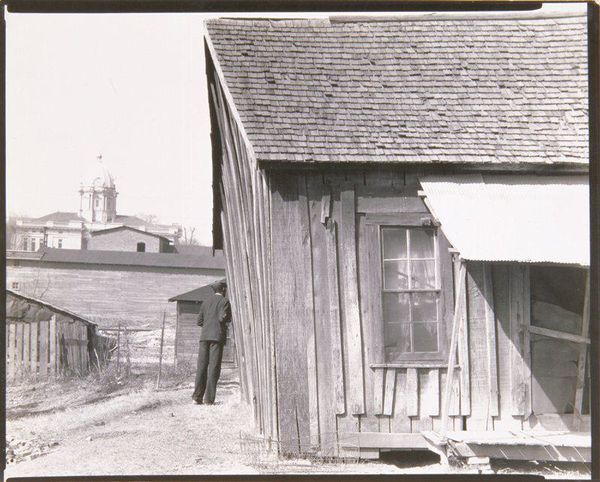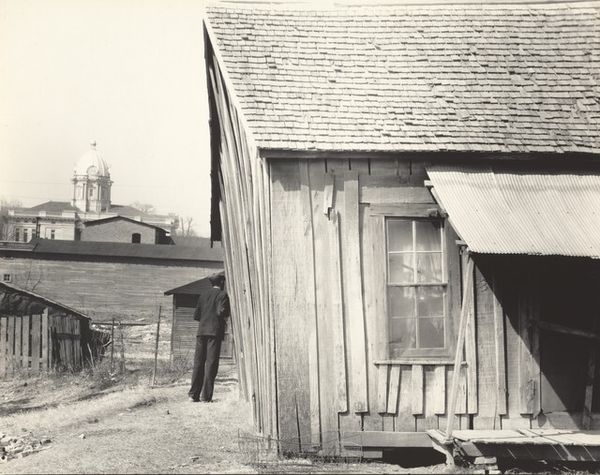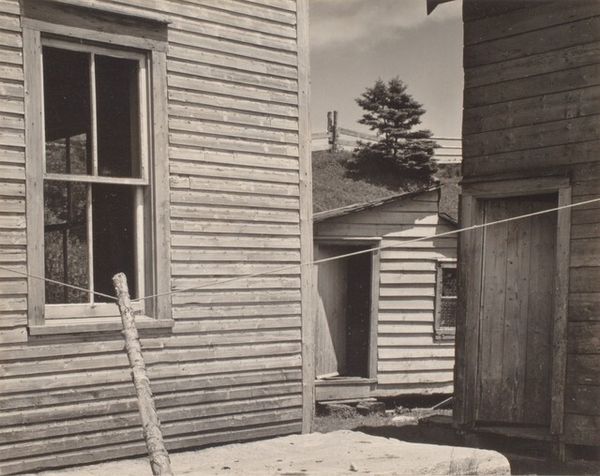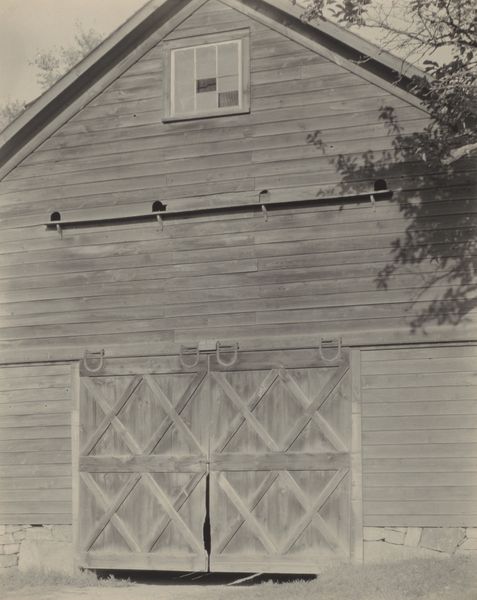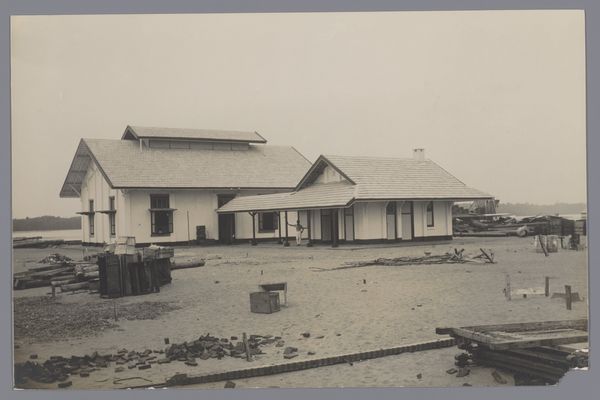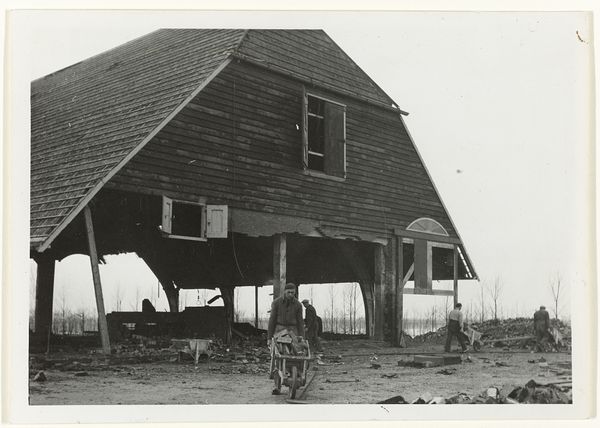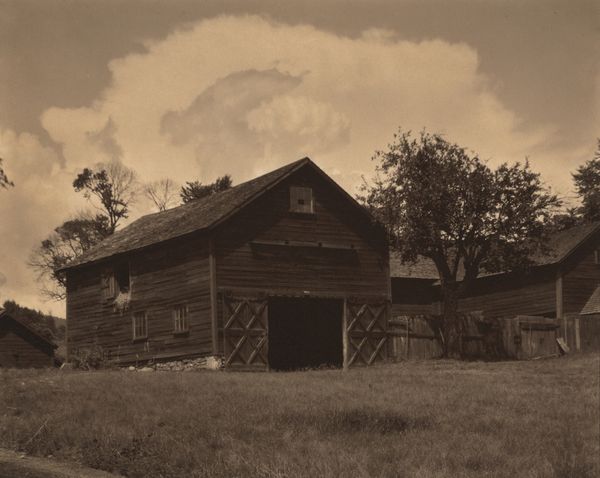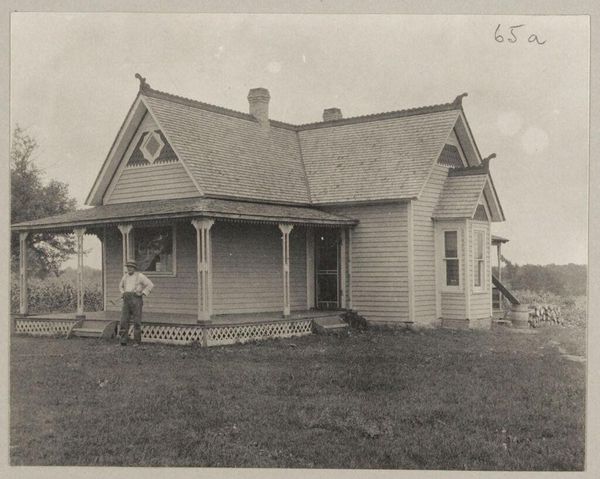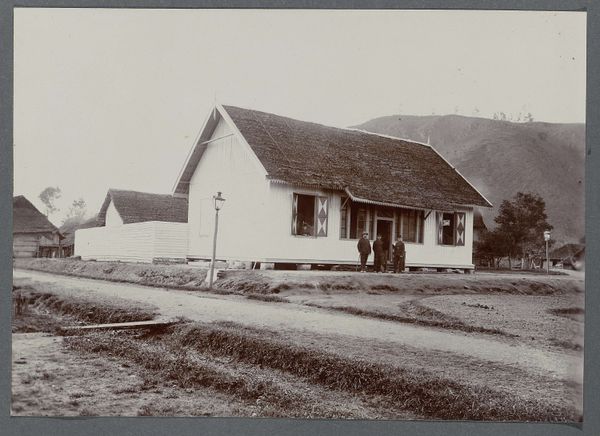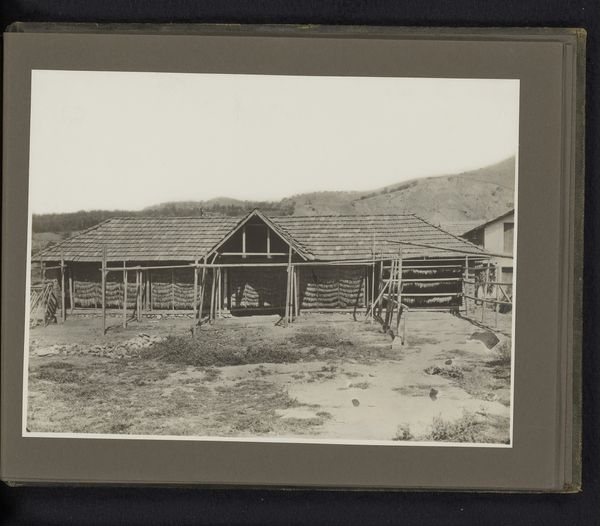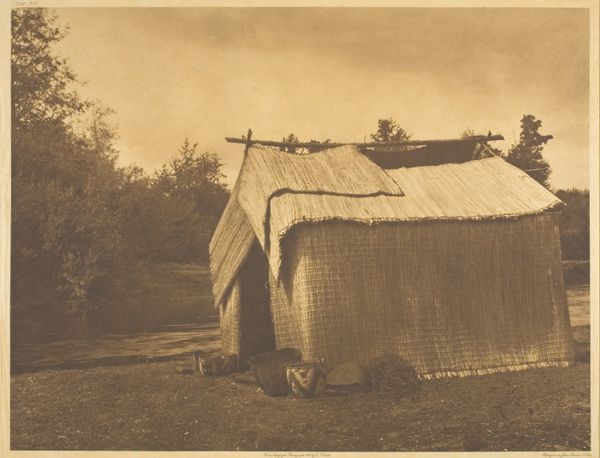
photography, gelatin-silver-print
#
landscape
#
photography
#
gelatin-silver-print
#
modernism
#
realism
Dimensions: image: 11.8 x 14.9 cm (4 5/8 x 5 7/8 in.) overall: 12.3 x 15.8 cm (4 13/16 x 6 1/4 in.)
Copyright: National Gallery of Art: CC0 1.0
Curator: Paul Strand's "Fence and Houses, Gaspé," created in 1929, uses a gelatin-silver print to capture a stark landscape. What strikes you most about it? Editor: It’s incredibly evocative. The textures of the weathered wood, the rough fence, and even the sky all contribute to a sense of isolation and the hardships of rural life. It makes you consider the precarity of the residents in Gaspé at that time. Curator: Yes, the materiality speaks volumes. Strand was meticulous in his process, choosing materials that would emphasize the textures and forms inherent in his subjects. He focuses on these humble structures; it's almost a study in wood and its various stages of weathering. Editor: And the picket fence! It hints at ownership, boundaries, and perhaps the economic divides within this rural community. A stark contrast, as a symbol, when set against those dark, looming clouds. Curator: Exactly. By emphasizing the textures and the construction methods, Strand isn't just documenting; he's highlighting the labor involved in building and maintaining these homes. Editor: Which certainly makes me think about the socioeconomic context of Gaspé at that time. This feels like a portrait of working-class resilience amid the economic realities of the early 20th century. It speaks of land rights, of human struggle. Curator: We're prompted to really see and value the material conditions that shape these lives. Strand's conscious use of his medium highlights the sheer effort of survival within that social fabric. Editor: Precisely, and while ostensibly a landscape, it's deeply imbued with social commentary. It makes one consider how seemingly neutral subjects can become charged with political meaning through the artist’s choices. Curator: It's a study in form, texture, and material culture—and it seems our own positions definitely affect what each of us takes away from it. Editor: Indeed. An image layered with historical and social textures revealed through materiality, inviting complex and meaningful conversation.
Comments
No comments
Be the first to comment and join the conversation on the ultimate creative platform.
